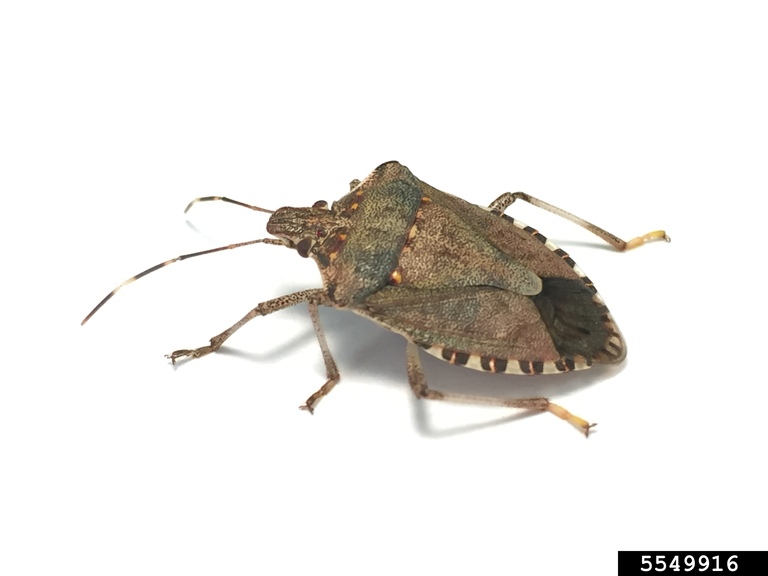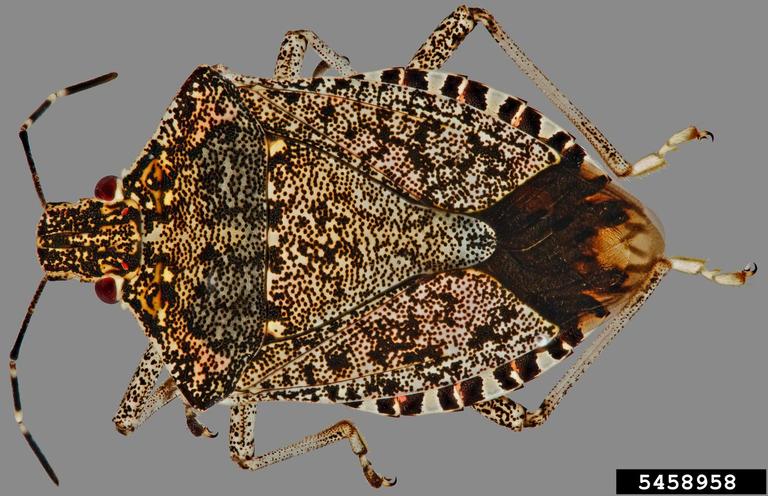Brown marmorated stink bug, Halyomorpha halys, is invasive to North America. It is not established in the prairie provinces of Canada. Brown marmorated stink bug is established in regions of British Columbia, Ontario, and Quebec.

Brown marmorated stink bugs are generalists that will feed on many species of fruits, berries, vegetables, ornamentals (trees, shrubs, flowering plants), and crop plants. Both the adults and nymphs of brown marmorated stink bug feed by inserting their mouthparts into the fruit, stems, or leaves of a host plant. They inject digestive enzymes into the plant and suck up liquid from the plant. The combination of physical and enzymatic damage can result in the formation of necrotic lesions that affect the look and texture of the host plant. Feeding damage can cause flower buds to die, can result in malformed fruits and berries, and shrunken or stained kernels and seeds.

Brown marmorated stink bug typically has only one generation per year where it is established in Canada (BC, Ontario, Quebec). Adults overwinter in sheltered areas, including buildings, and begin to emerge from overwintering sites in May and early June. Egg laying usually starts one or two weeks after adult emergence. Egg laying and hatch can be staggered, thus adults, eggs, and nymphs can all be found at the same time for much of the summer.
Brown marmorated stink bugs can be distinguished from other species of stink bugs by the two white bands on the antennae of adults and of late-instar nymphs.

Brown marmorated stink bugs are not regulated by the CFIA. Sightings of brown marmorated stink bugs in Alberta, Saskatchewan, and Manitoba can be reported to the Canadian Plant Health Council using this Google Form.
For more information and pictures of brown marmorated stink bug, please check out the British Columbia Pest Alert and Factsheet or the Government of Ontario brown marmorated stink bug page.
